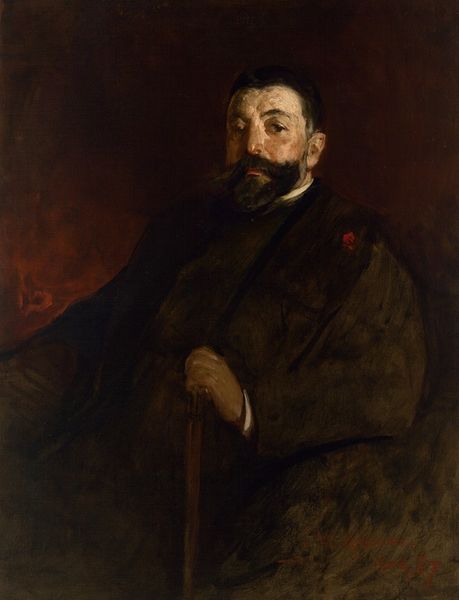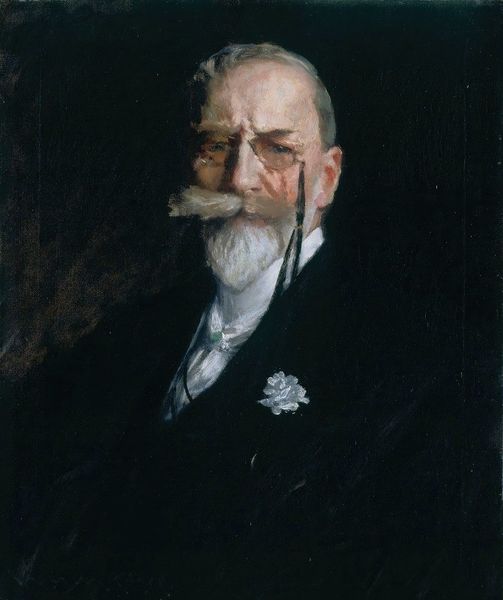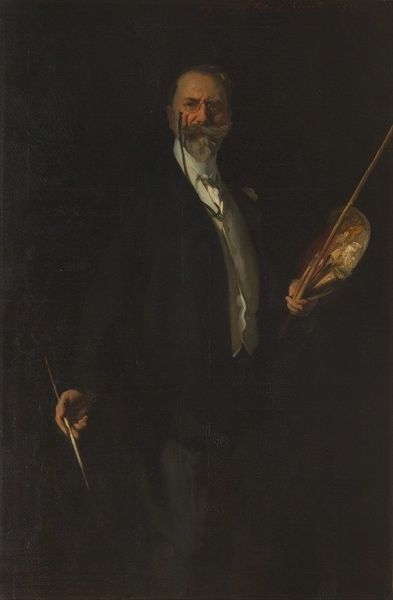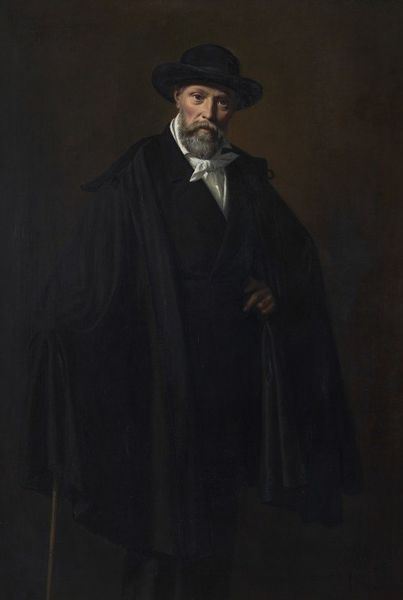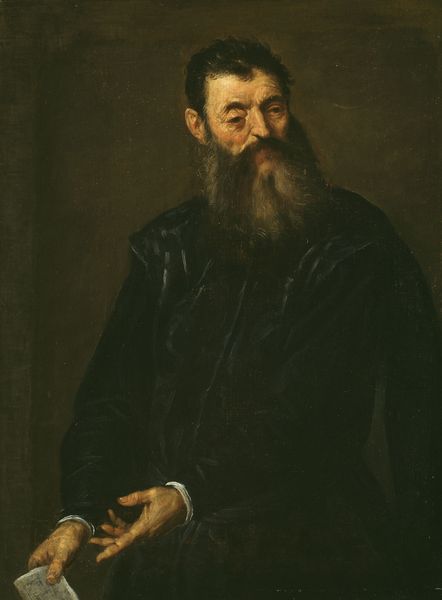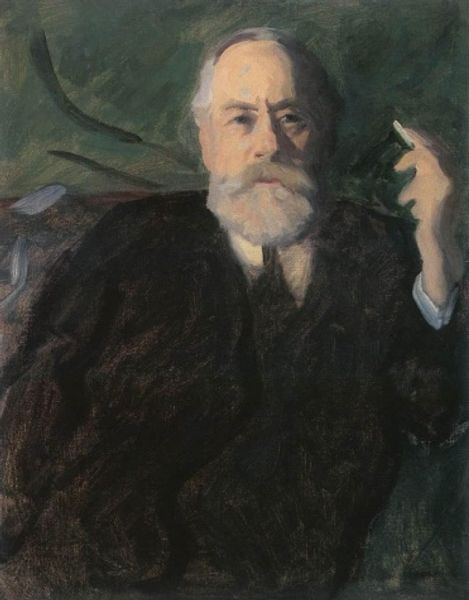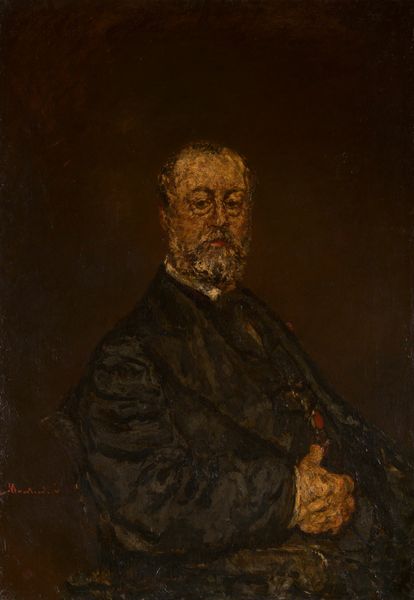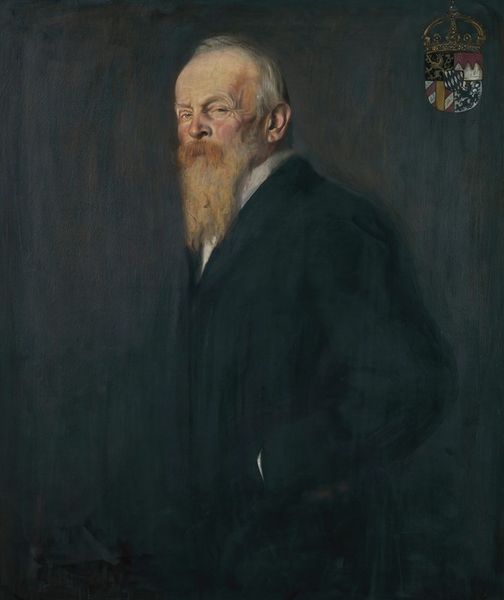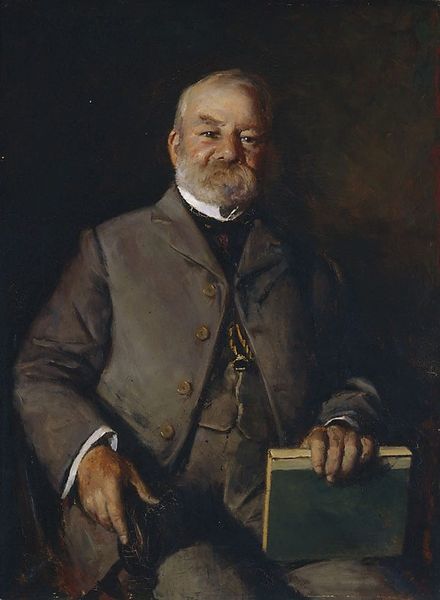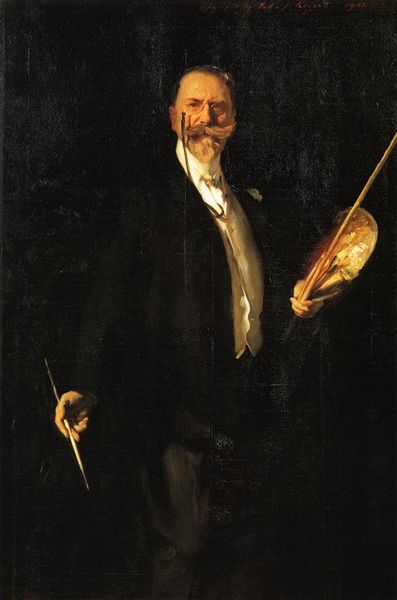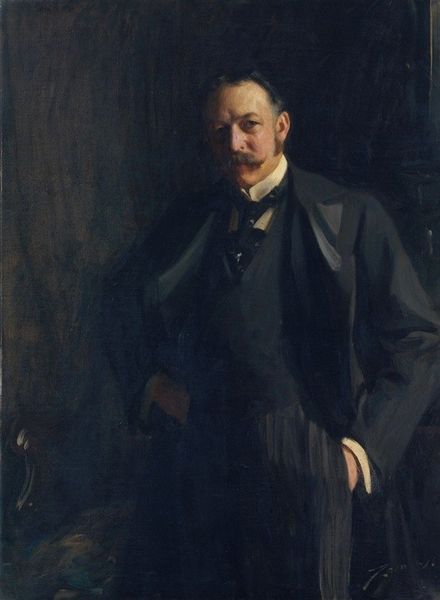
Copyright: Public domain
Editor: This is "Willy," a painting by Giovanni Boldini, done in 1905. It looks like oil on canvas, and you can really see the brushstrokes – the impasto gives it such texture. I'm immediately struck by how the darkness of the clothing and the background make the face pop. What stands out to you in this piece? Curator: The dynamic interplay between light and shadow is indeed a crucial element. Consider how Boldini uses value to define form. The artist manipulates light, predominantly around the face, the stark white gloves, to create focal points. This contrast isn't just decorative; it guides the eye through the composition, revealing the careful consideration of visual hierarchy. Do you observe how this controlled distribution impacts the painting's overall rhythm and balance? Editor: I do, it's like a spotlight effect! And the composition itself seems really deliberate – the placement of the cane, the tilt of the head… How does that all work together? Curator: Precisely! The composition follows a subtle diagonal axis, subtly tilted towards the viewer, which introduces a dynamic energy. Semiotically, the man's accessories – top hat, cane, gloves – function as signifiers of status and affluence. These aren't merely details, they construct a narrative of bourgeois identity within the visual language of the painting. Note that the dark palette adds another level of depth, which may represent both literally and psychologically the subject, Willy, is presented to us. Editor: That makes so much sense! I hadn't really thought about the accessories as a language of their own. Curator: Precisely. It is through this semiotic study that we begin to truly appreciate the visual syntax constructed by Boldini. Every element works towards producing not just an aesthetic object, but a sign, rich with the details of history, culture, and representation. It moves beyond likeness, which ultimately defines an art work's essence. Editor: That's a completely different way to appreciate this piece, thinking of all the layers. Curator: And that multilayered experience transforms our understanding, doesn't it? We are challenged to decode rather than simply observe.
Comments
No comments
Be the first to comment and join the conversation on the ultimate creative platform.
